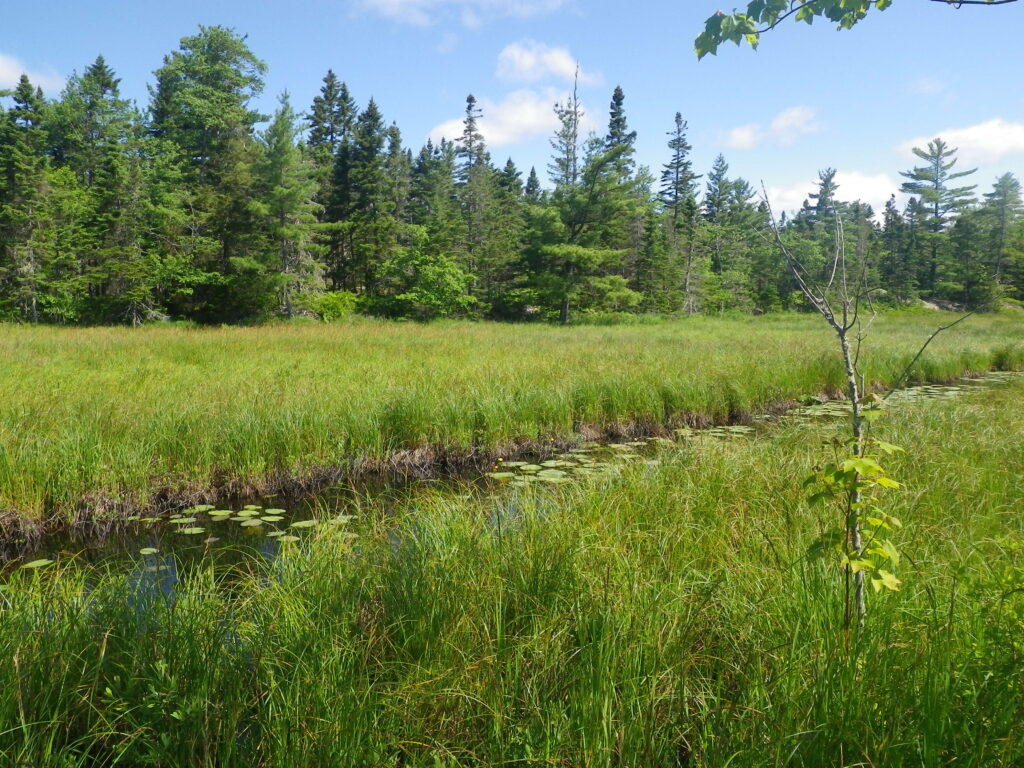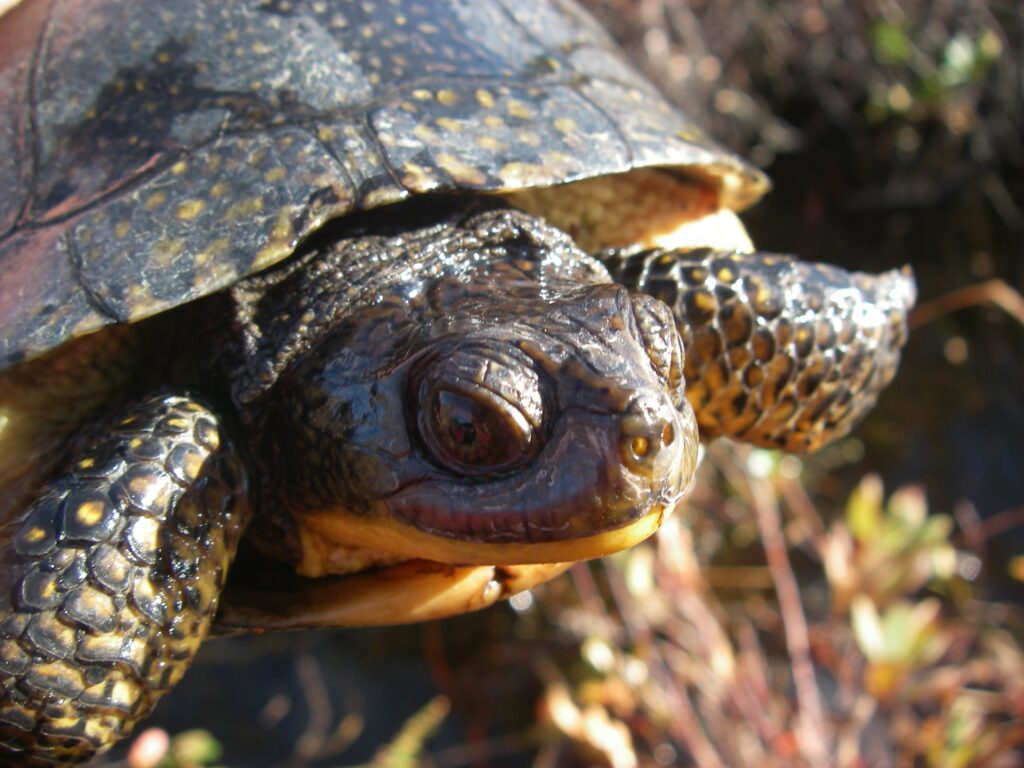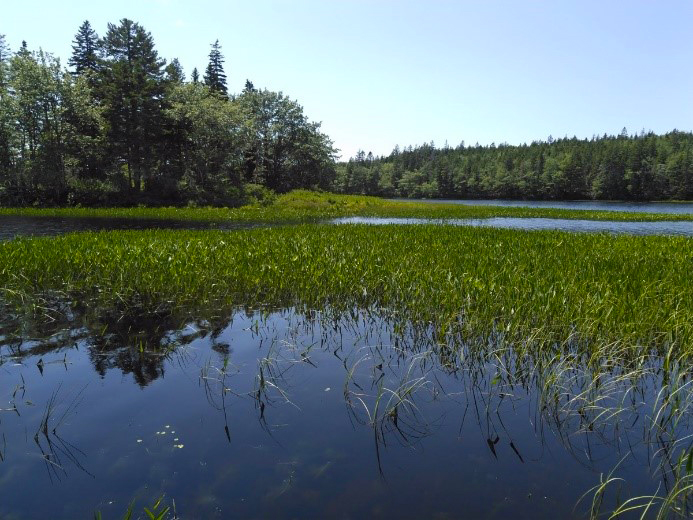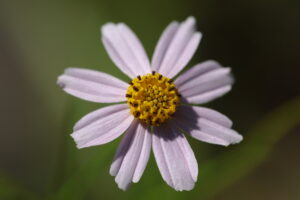Species-at-risk habitat protected on new Conservation Lands
01 May 2023
We’ve recently secured two more properties, with a special thanks to Wayne and Bertha Fiddes! Salmon Lake and Deep Brook Bog near Pleasant River in Kespukwitk/Southwest NS both offer immense conservation value as they provide crucial habitat for a variety of at-risk and endangered species!
 The first secured property is a 40-acre addition to our existing Deep Brook Bog conservation lands. Generously donated by Wayne and Bertha Fiddes, this area is comprised of two parcels of ecologically significant land bordering a trail near Pleasant River. The land supports a combination of mixedwood and hardwood forests, and tree and shrub-dominated swamps and wetlands.
The first secured property is a 40-acre addition to our existing Deep Brook Bog conservation lands. Generously donated by Wayne and Bertha Fiddes, this area is comprised of two parcels of ecologically significant land bordering a trail near Pleasant River. The land supports a combination of mixedwood and hardwood forests, and tree and shrub-dominated swamps and wetlands.
Importantly, these donated lands are designated Critical Habitat for the endangered Blanding’s Turtle and the Eastern Ribbonsnake and contain potential habitat for several other Species at risk, including the Olive-sided Flycatcher and Canada Warbler, as well as Wrinkled Shingle Lichen.

Blanding’s Turtle, by Jeffie McNeil
Deep Brook Bog is located several hundred meters from the Pleasant River Woodlands Conservation Lands, and is in proximity to other existing Nature Trust properties and portions of the Pu’tlaqne’katik Wilderness Area.
Thank you to Wayne and Bertha for this incredible gift which will now be protected forever. The land donation qualifies as an Ecogift under Canada’s Ecological Gifts Program, a conservation incentive initiative providing landowners with special income tax benefits in recognition of their contribution to protecting Canada’s biodiversity.
This project was undertaken with the financial support of the Government of Canada through the federal Department of Environment and Climate Change’s Priority Places for Species at Risk Program. Stewardship funds to ensure the long-term care and protection of the property were provided through generous donations to our Twice the Wild Campaign.
 The second is Salmon Lake, a 347-acre property located within the Kespukwitk/Southwest Nova Scotia Priority Place and part of the Tusket River watershed – a focus area for the Nature Trust as it’s a federally and provincially recognized Priority Place for providing important habitat for at-risk Atlantic Coastal Plain Flora (ACPF) species.
The second is Salmon Lake, a 347-acre property located within the Kespukwitk/Southwest Nova Scotia Priority Place and part of the Tusket River watershed – a focus area for the Nature Trust as it’s a federally and provincially recognized Priority Place for providing important habitat for at-risk Atlantic Coastal Plain Flora (ACPF) species.
The property itself contains six parcels of land on the western side of Salmon Lake and over a kilometre of shoreline. Although the property has a history of logging activities, there is relatively mature forest conditions prevalent throughout, as well as two watercourses that flow into the lake at the northern and southern portions of the property’s shoreline. The area supports habitat for the at-risk plants Pink Coreopsis and Spotted Pondweed, along with several other rare plants and at-risk birds.
The Tusket River watershed is well-known to have important conservation value, particularly for ACPF, and the securement of Salmon Lake complements a long history of conservation efforts from government and non-government organizations in the surrounding landscape that has been dedicated to this unique group of plants.

Endangered Pink Coreopsis
Of the ACPF-inhabited lakes in the Tusket-Annis watershed, Salmon Lake is the most impacted due to several factors: heavy cottage and residential development, threats from OHV use, infilling, forestry and more. The property’s securement marks the first protected area on Salmon Lake, which will help prevent the impact of these threats and fill a gap in the existing protected areas system.
Due to the heavy presence of ACPF, Salmon Lake was secured in part with funding provided by the Southwest Biosphere Reserve Association, a group working to conserve this UNESCO designated and internationally recognized region of natural and cultural heritage and one of only 18 biosphere reserves in Canada. This project was undertaken with the financial support of the Government of Canada through the federal Department of Environment and Climate Change’s Priority Places for Species at Risk Program. Additional funds were also provided by the Nova Scotia Crown Share Land Legacy Trust, and remaining securement and stewardship costs were raised through Twice the Wild.
To help support the ongoing stewardship efforts of important habitat areas like Salmon Lake, Deep Brook Bog or any of our other conservation lands – please donate to Twice the Wild today.
